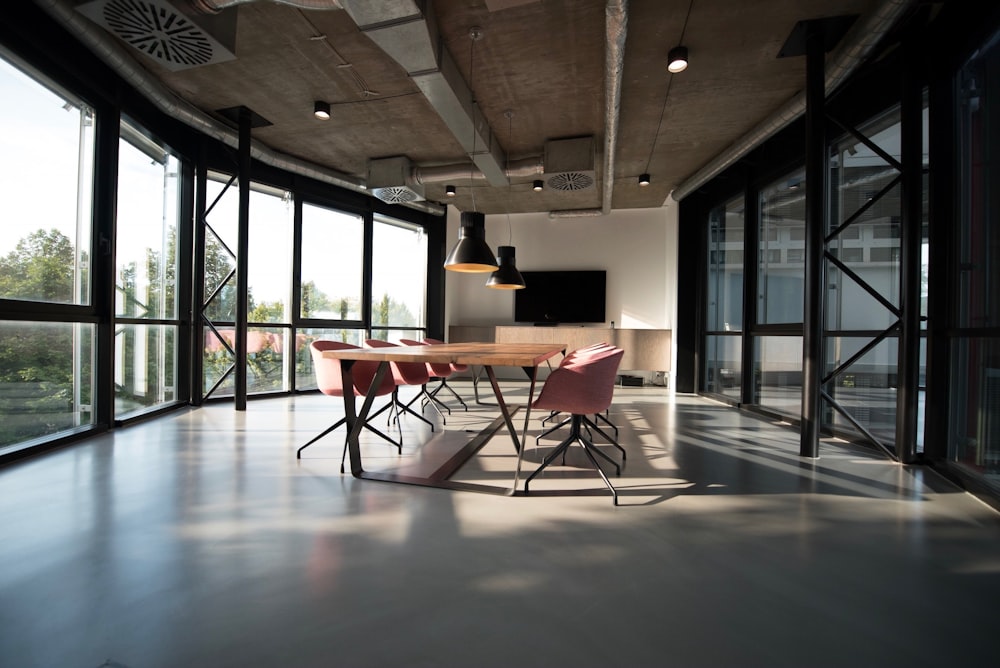How To
Documenting Lease End: Essential Steps for Termination
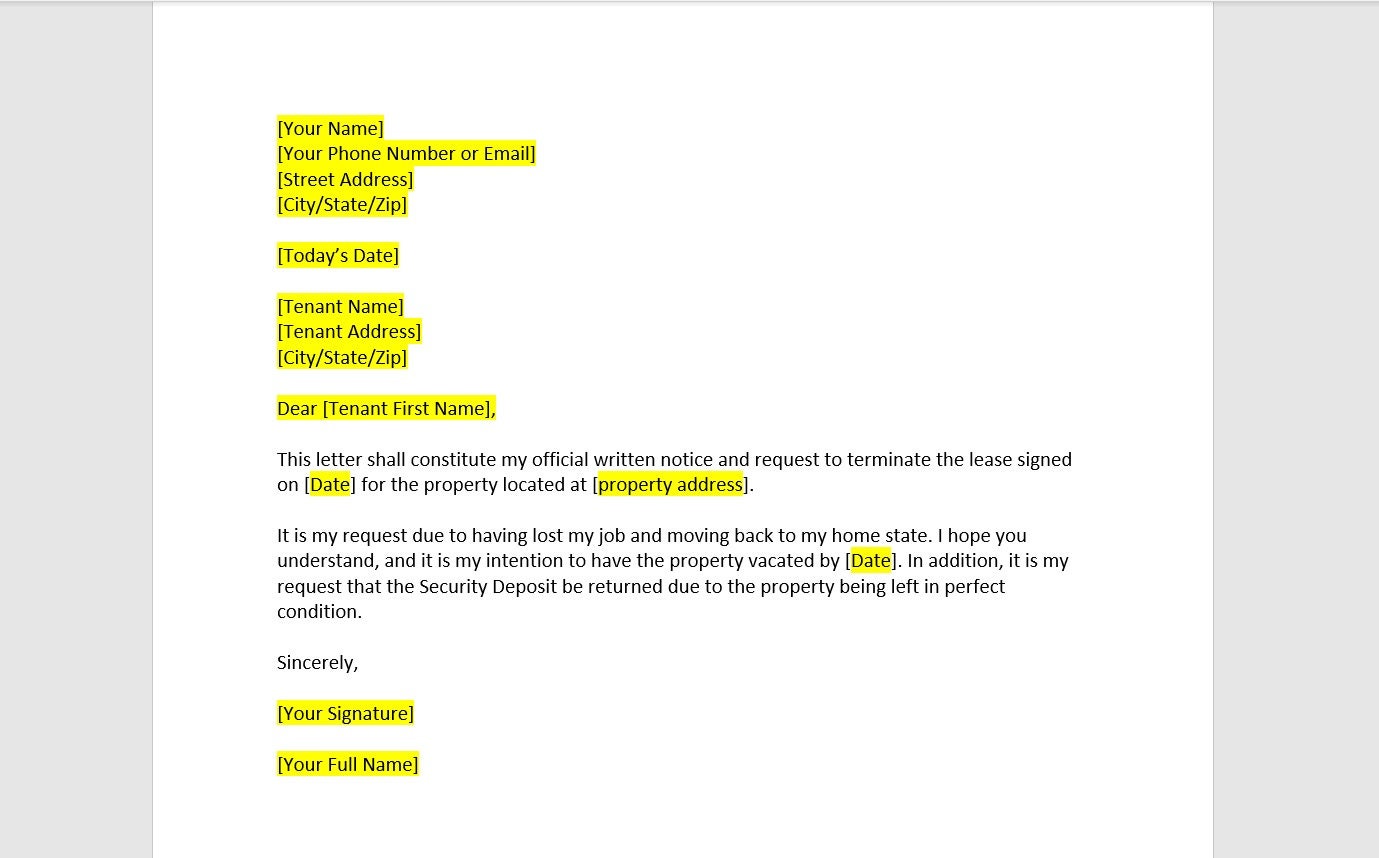
Documenting Lease End: Essential Steps for Termination
Lease termination is a significant process that requires careful documentation to ensure a smooth and legally sound transition for both landlords and tenants. This article outlines the essential steps and considerations for proper lease termination documentation.
Understanding the Importance of Documentation
Documentation serves as a crucial record of the lease termination process. It provides clarity on the terms agreed upon by both parties and minimizes the risk of disputes or misunderstandings. Comprehensive documentation ensures that the rights and responsibilities of both landlords and tenants are clearly outlined.
1. Written Notice of Termination
The first step in lease termination documentation is providing written notice to the other party. Whether it’s the landlord notifying the tenant or vice versa, the written notice should clearly state the intention to terminate the lease and include the proposed termination date. This formal communication sets the process in motion.
2. Acknowledgment of Notice
Upon receiving the written notice, the other party should acknowledge receipt. This acknowledgment can be a simple written confirmation that the notice has been received, ensuring that both parties are aware of the impending termination. This step helps in establishing a clear timeline for the process.
3. Inspection and Property Walkthrough
Before the actual termination date, conducting a thorough inspection and walkthrough of the property is essential. Documenting the condition of the property at this stage helps identify any pre-existing damages or issues. Both parties should be present during this inspection, and their observations should be recorded.
4. Agreement on Property Condition
Based on the inspection, landlords and tenants should come to an agreement on the property’s condition. Any discrepancies in assessing damages or necessary repairs should be discussed and documented. This agreement forms the basis for determining the return of security deposits and handling any financial aspects related to property condition.
5. Settlement of Outstanding Dues
Lease termination often involves settling outstanding financial matters. Both parties should document any pending rent payments, utility bills, or other dues. This documentation ensures that there is a clear record of financial transactions and helps prevent disputes over payment obligations.
6. Return of Security Deposit
If a security deposit was collected at the beginning of the lease, the process for its return should be clearly documented. Any deductions for damages or unpaid rent should be outlined in writing, and both parties should agree on the final amount to be returned. This documentation is crucial for financial transparency.
7. Finalization of Lease Termination Agreement
A comprehensive lease termination agreement should be drafted, outlining the agreed-upon terms and conditions for the termination. This document typically includes details on the termination date, property condition, financial settlements, and any other relevant agreements reached between the landlord and tenant.
8. Signatures of Both Parties
To validate the lease termination documentation, both parties should sign the final agreement. This formalizes their agreement and acknowledges their understanding and acceptance of the terms outlined in the documentation. Signatures add a layer of legal authenticity to the entire
Deck Mastery Best Contractors for Your Outdoor Oasis
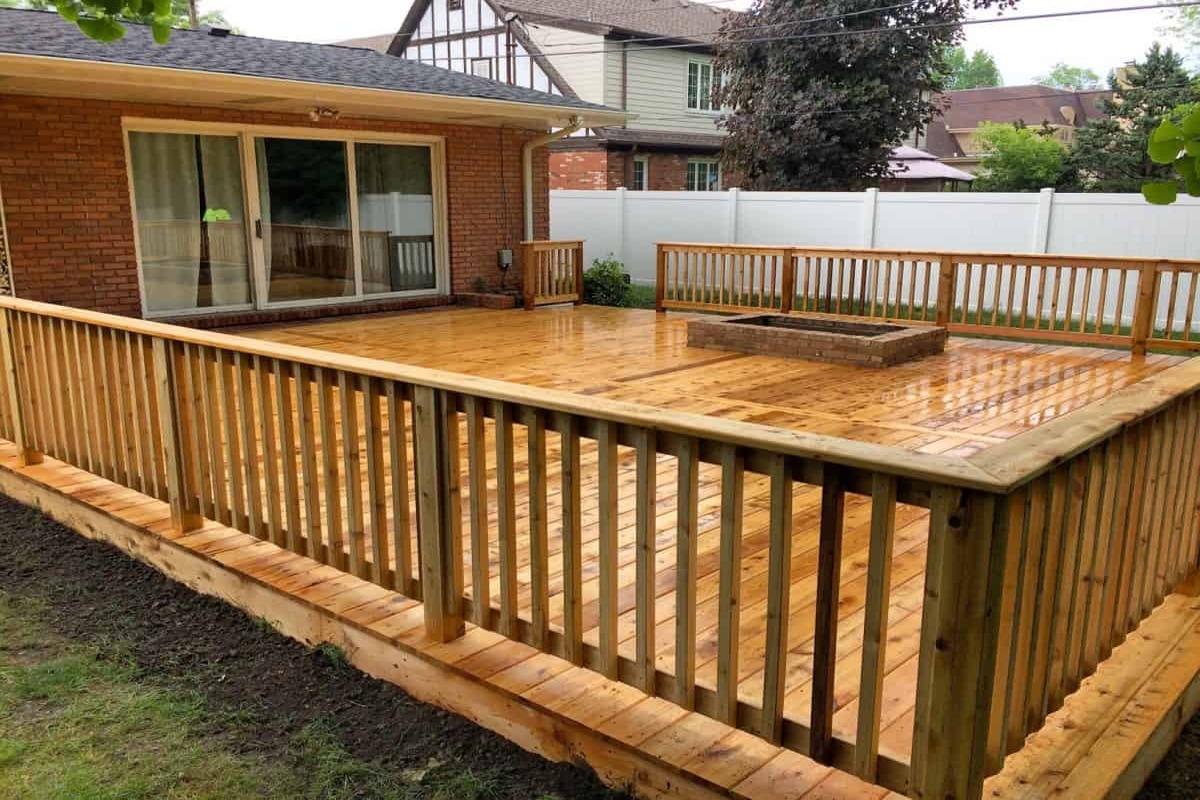
Crafting Outdoor Elegance: Unveiling the Best Deck Contractors
When it comes to turning your outdoor space into a haven of relaxation and entertainment, the choice of deck contractors becomes pivotal. Enter the realm of Best Deck Contractors, where craftsmanship, innovation, and a commitment to excellence converge to create outdoor oases that transcend the ordinary.
Linking You to Outdoor Splendor: Explore walenshipnigltd.com
Embark on a journey to elevate your outdoor living with Best Deck Contractors. As maestros in the art of deck construction, they transform visions into tangible, breathtaking realities. Dive into the possibilities at walenshipnigltd.com and discover how your outdoor oasis can take shape in the hands of these esteemed contractors.
Mastering Deck Craftsmanship: Beyond the Basics
At the core of the best deck contractors is a mastery of craftsmanship that goes beyond the basics. They understand that a deck is not just a structure; it’s an extension of your living space. With precision and attention to detail, these contractors weave together materials and design to create decks that stand as functional works of art.
Innovative Deck Designs: Pioneering Outdoor Aesthetics
The best deck contractors are not content with the conventional. They are pioneers in innovative deck designs that elevate outdoor aesthetics. From intricate patterns to multi-level structures, each design is a testament to their ability to push the boundaries of what a deck can be.
Quality Materials, Lasting Beauty: A Foundation of Excellence
In the world of deck construction, quality begins with materials. The best deck contractors prioritize the use of premium, durable materials that not only withstand the elements but also age gracefully. This commitment to quality ensures that your deck remains a source of beauty and enjoyment for years to come.
Customization Excellence: Tailoring Decks to Your Dreams
No two outdoor spaces are the same, and the best deck contractors embrace this uniqueness. Their commitment to customization excellence means that each deck is tailor-made to align with your dreams and preferences. From size and shape to features and finishes, your vision guides the creation process.
Outdoor Living Integration: Seamless Transitions
A deck is not just an isolated structure; it’s a seamless extension of your indoor living. The best deck contractors specialize in creating transitions that flow effortlessly, blurring the lines between indoor and outdoor spaces. The result is a harmonious integration that enhances the overall appeal of your home.
Sustainable Deck Practices: Green Outdoor Living
In an era of environmental consciousness, the best deck contractors lead the way in sustainable practices. From eco-friendly materials to energy-efficient designs, they prioritize creating decks that align with a green outdoor living philosophy. Your outdoor oasis becomes a reflection of not just beauty but also environmental stewardship.
Client-Centric Approach: Turning Dreams into Decks
The journey of crafting the perfect deck is a collaborative one with the best deck contractors. Their client-centric approach means that your aspirations are at the forefront. They listen, understand, and turn your dreams into decks that not only meet but exceed expectations.
Timely Deck Construction:
Perfecting Your Rental Search: Essential Criteria for Your Ideal Home
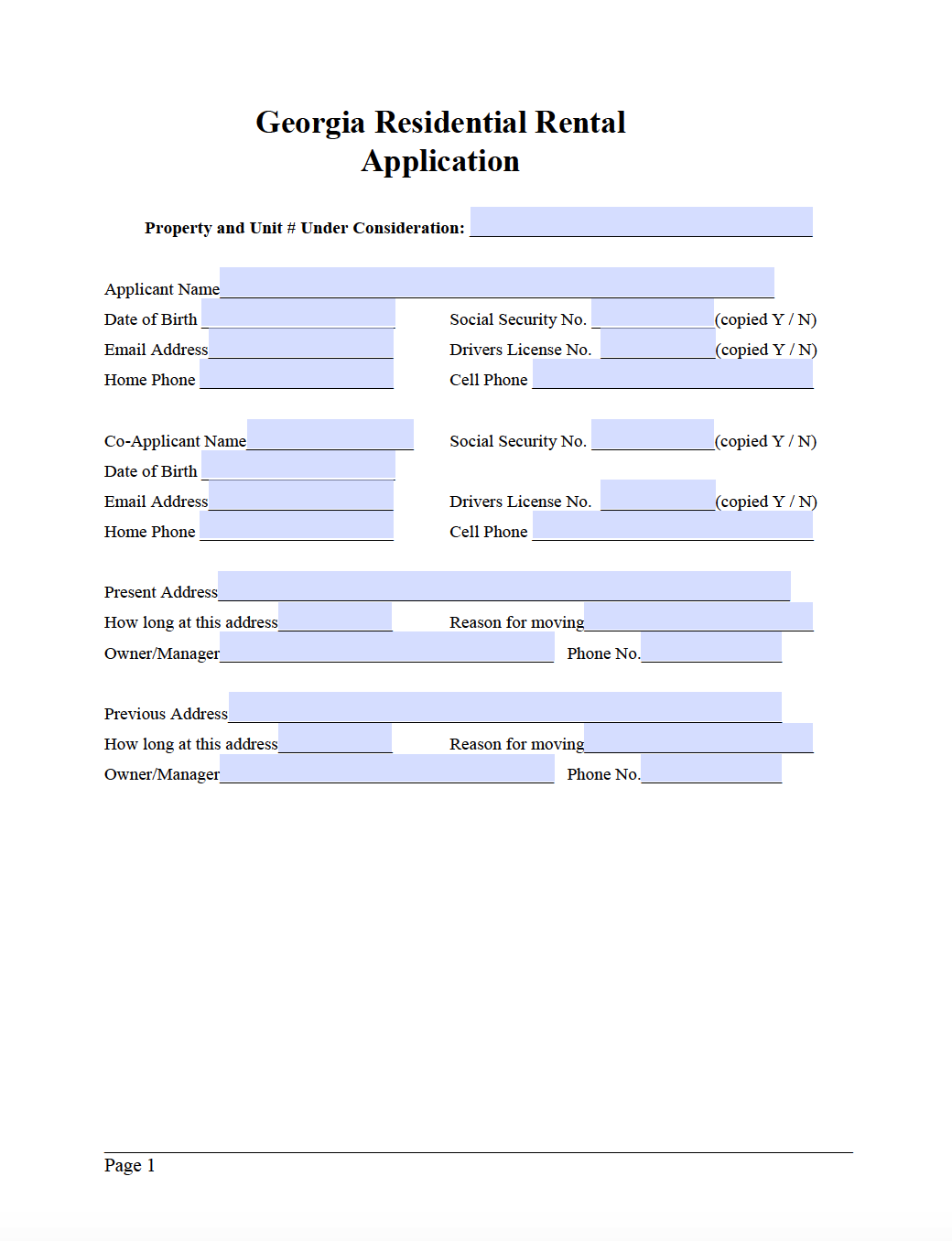
Exploring Essential Rental Criteria for Your Ideal Home
Embarking on a search for the perfect rental property is an exciting yet meticulous process. To ensure you find the ideal home that meets your needs, it’s crucial to establish and prioritize your rental criteria. From location and budget to amenities and lease terms, each factor plays a significant role in shaping your living experience.
Location Matters: Proximity to Work and Lifestyle
The first and often foremost criterion is the location. Consider the proximity to your workplace, amenities, and other essential services. Choosing a location that aligns with your lifestyle ensures a seamless daily routine. Whether you prefer a bustling city center or a quiet suburban neighborhood, the right location sets the foundation for your ideal home.
Setting a Realistic Budget: Affordability and Quality
Determining your budget is a pivotal step in the rental process. While it’s tempting to aim for luxurious features, it’s essential to strike a balance between affordability and the quality of life a property offers. Assess your financial situation, set a realistic budget, and explore rental options that align with your financial goals.
Amenities and Comfort: Enhancing Your Living Experience
Beyond the basics, consider the amenities that contribute to your overall comfort. Whether it’s a fitness center, communal spaces, or pet-friendly facilities, these extras can significantly enhance your living experience. Prioritize amenities that align with your lifestyle, making your rental property feel like a true home.
Lease Terms and Flexibility: Planning for the Future
Understanding the lease terms is crucial for a smooth rental experience. Consider the length of the lease, renewal options, and any potential restrictions. Flexibility in lease terms allows you to plan for the future and adapt to any changes in your circumstances. Be sure to read and understand the terms before committing to a rental agreement.
Safety and Security: Peace of Mind Matters
The safety of your potential home and its surroundings is paramount. Research the neighborhood’s safety record, check the security features of the property, and ensure your peace of mind. Feeling secure in your living environment is essential for a positive rental experience.
Inspecting the Property: Look Beyond the Surface
Before finalizing your decision, conduct a thorough inspection of the property. Look beyond the surface to identify any potential issues or maintenance needs. From plumbing and electrical systems to structural integrity, a comprehensive inspection ensures that your chosen rental meets the necessary standards.
Community Atmosphere: Gauging the Neighborhood Vibe
Understanding the community atmosphere is integral to your rental criteria. Take the time to explore the neighborhood, interact with potential neighbors, and gauge the overall vibe. A welcoming community adds immense value to your living experience, making it more enjoyable and fulfilling.
Transportation Accessibility: Convenience at Your Doorstep
Evaluate the transportation options available in the area. Proximity to public transportation, major highways, and essential services contributes to the overall convenience of your chosen location. Easy access to transportation ensures that you can navigate your surroundings effortlessly.
Pet-Friendly Policies: Accommodating Furry Companions
For pet
Lease Co-signers: Strengthening Rental Applications
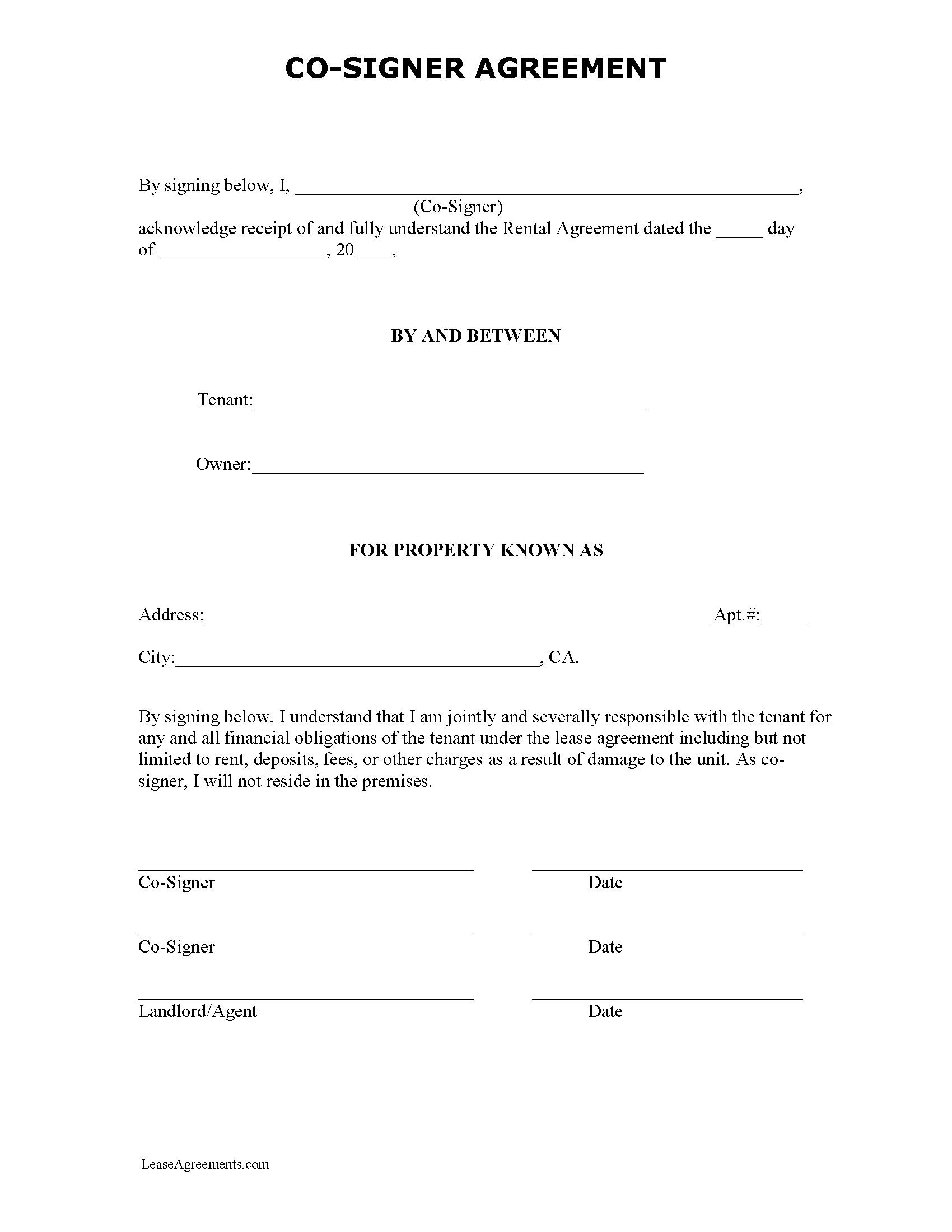
Navigating Lease Co-signers: Bolstering Rental Applications
Securing a rental can be challenging, especially when facing hurdles like a limited credit history or income. In such cases, having a lease co-signer can make a substantial difference. Understanding the role of co-signers, their responsibilities, and how to approach this arrangement is essential for tenants seeking to strengthen their rental applications.
The Role of Lease Co-signers in Rental Applications
A lease co-signer, also known as a guarantor, is an individual who agrees to assume financial responsibility for the lease if the primary tenant is unable to meet their obligations. This person essentially acts as a backup, providing landlords with an additional layer of assurance regarding the tenant’s ability to pay rent on time and fulfill other lease commitments.
When and Why a Co-signer is Needed
Landlords may request a co-signer in situations where the primary tenant has insufficient income, a limited credit history, or a low credit score. These factors might raise concerns about the tenant’s financial stability, making landlords hesitant to approve the application on their own. A co-signer helps mitigate these concerns, increasing the likelihood of the application being accepted.
Choosing the Right Co-signer: Considerations and Criteria
Selecting an appropriate co-signer is a crucial aspect of this arrangement. Ideally, a co-signer should have a strong credit history, a stable income, and a willingness to take on the financial responsibility outlined in the lease agreement. Parents, relatives, or close friends are common choices as co-signers, but anyone willing to fulfill the role and meet the criteria can serve in this capacity.
The Co-signer Agreement: Clear Terms and Responsibilities
Before finalizing the co-signer arrangement, it’s essential to establish clear terms and responsibilities. This includes outlining the specific obligations of the co-signer, such as covering rent payments, late fees, and any damages if the primary tenant fails to do so. Having a legally binding agreement in place protects both parties and ensures a transparent understanding of the arrangement.
Communicating Openly with Co-signers
Open communication between the primary tenant and the co-signer is crucial for a successful arrangement. The primary tenant should clearly communicate the terms of the lease, the reasons for requiring a co-signer, and any expectations regarding ongoing communication. This transparency fosters a positive and cooperative relationship, benefiting all parties involved.
Seeking Co-signer Approval: Approaching the Conversation
Approaching someone to be a co-signer is a significant request. It’s important to present the request professionally, providing information about the rental, explaining the need for a co-signer, and addressing any concerns they may have. Being upfront about expectations and expressing gratitude for their assistance increases the likelihood of a positive response.
Understanding Co-signer Risks: Potential Implications
While co-signers play a crucial role in helping tenants secure rentals, it’s essential to recognize the risks involved. Co-signers are financially responsible if the primary tenant defaults on their obligations. This can strain relationships if not handled properly. Therefore, tenants should prioritize fulfilling their lease commitments to maintain trust with their co-signers.
Alternatives to Co-signers: Exploring Other Options
In
Efficient Rental Inspections for Property Maintenance

Efficient Rental Inspections for Property Maintenance
Rental inspections play a crucial role in ensuring the upkeep of a property and maintaining a harmonious relationship between landlords and tenants. Let’s explore the significance of rental inspections and how they contribute to the overall well-being of rental properties.
The Purpose of Rental Inspections
Rental inspections serve as a systematic process for landlords to assess the condition of their properties periodically. The primary goal is to identify any necessary repairs or maintenance issues promptly. These inspections also allow landlords to ensure that tenants are adhering to the terms of the lease agreement regarding property care.
Preventing Small Issues from Escalating
Regular rental inspections help in catching small issues before they escalate into more significant problems. Identifying and addressing minor maintenance issues early on can prevent them from turning into costly repairs down the line. This proactive approach contributes to the longevity and value of the property.
Building a Positive Landlord-Tenant Relationship
Transparent communication is essential for a positive landlord-tenant relationship. Conducting rental inspections provides an opportunity for landlords to engage with tenants, discuss any concerns, and address questions. This open line of communication fosters trust and cooperation, creating a more positive living environment for all parties involved.
Ensuring Compliance with Lease Agreements
Lease agreements typically outline specific responsibilities for both landlords and tenants regarding property maintenance. Rental inspections serve as a means to ensure that tenants are adhering to these agreements. It allows landlords to address any violations or issues promptly, reinforcing the importance of compliance.
Providing a Safe and Comfortable Living Environment
Tenant safety and comfort are paramount. Regular rental inspections help identify potential safety hazards, such as faulty wiring, gas leaks, or structural issues. Addressing these concerns promptly not only ensures the well-being of the tenants but also contributes to the overall habitability of the property.
Effective Communication during Inspections
During rental inspections, effective communication is key. Landlords should provide tenants with sufficient notice before conducting an inspection, respecting their privacy and scheduling preferences. Clear communication helps set expectations and fosters a cooperative atmosphere.
Addressing Tenant Concerns and Feedback
Rental inspections are not just an opportunity for landlords to evaluate the property; they also provide a platform for tenants to voice their concerns or provide feedback. Landlords should actively listen to tenant input and address any valid concerns. This collaborative approach strengthens the landlord-tenant relationship.
Utilizing Technology for Efficiency
In today’s digital age, technology can streamline the rental inspection process. Landlords may use property management software or apps to schedule inspections, document findings, and communicate with tenants efficiently. Leveraging technology enhances the overall efficiency of the inspection process.
Ensuring Privacy and Respectful Conduct
Respecting tenant privacy is crucial during rental inspections. Landlords should focus on inspecting common areas and essential systems, while respecting the tenants’ personal spaces. Providing clear guidelines on the scope of the inspection helps create a sense of privacy and respect for the tenants.
Conclusion: A Proactive Approach to Property Maintenance
In conclusion, rental inspections are a proactive
Revitalize Spaces Best Remodeling Company Excellence
Revitalize Spaces: The Pinnacle of Excellence with the Best Remodeling Company
Embarking on a remodeling journey is more than just a renovation; it’s an opportunity to breathe new life into your spaces. Choosing the best remodeling company is the cornerstone of ensuring that this transformation exceeds expectations, making every corner of your home a reflection of your style and comfort.
Craftsmanship Beyond Compare: The Mark of Excellence
The best remodeling company is distinguished by its craftsmanship, which goes beyond mere competence. It’s about creating a mark of excellence in every detail, from the initial concept to the final finishing touches. Craftsmanship becomes the signature of your remodeled space, showcasing a commitment to quality and precision that stands the test of time.
Tailored Solutions: A Personal Touch to Your Vision
Remodeling is a personal journey, and the best remodeling company understands the importance of tailored solutions. It’s not about imposing a one-size-fits-all approach but rather about infusing a personal touch to your vision. Each remodeling project becomes a unique canvas where your preferences and lifestyle are seamlessly integrated.
Innovative Design Concepts: Elevating Aesthetics and Functionality
Innovation is the heartbeat of the best remodeling company. It goes beyond the conventional and embraces design concepts that elevate both aesthetics and functionality. Whether it’s modernizing spaces with smart technologies, incorporating sustainable elements, or reimagining layouts for better flow, innovation becomes the driving force behind the remodeling process.
Efficiency in Execution: Timely Transformation Without Compromise
Remodeling doesn’t have to be a prolonged disruption. The best remodeling company excels in efficiency, ensuring a timely transformation without compromising quality. From meticulous project planning to streamlined execution, the goal is to bring your vision to life with minimal inconvenience and swift results.
Transparent Communication: Your Informed Remodeling Journey
Effective communication is a cornerstone of the remodeling journey with the best remodeling company. Transparency is not just a value; it’s a commitment to keeping you informed at every stage. Regular updates, open lines of communication, and addressing any concerns promptly ensure that your remodeling journey is a collaborative and well-informed process.
Versatility in Services: Beyond Standard Remodeling Practices
The best remodeling company offers more than standard remodeling practices. Its versatility extends to a range of services, from kitchen and bathroom transformations to whole-home renovations. This comprehensive approach ensures that every aspect of your space receives the attention it deserves, creating a harmonious and cohesive result.
Customer-Centric Approach: Your Satisfaction is Priority
Customer satisfaction is not just a goal; it’s the priority for the best remodeling company. Your vision and contentment become the benchmarks for success. The customer-centric approach involves understanding your desires, addressing concerns promptly, and delivering a remodeled space that not only meets but exceeds your expectations.
Local Reputation Speaks Volumes: Trust in Experience
One of the advantages of choosing the best remodeling company is the ability to tap into its local reputation. Check reviews, ask for referrals, and you’ll likely find satisfied customers who have experienced firsthand the excellence of their work. Local reputation speaks volumes, providing
Maximizing Value: Essential Upgrades for Rental Properties

Maximizing Value: Essential Upgrades for Rental Properties
Investing in strategic upgrades for your rental property not only enhances its appeal but also increases its value and attracts high-quality tenants. In this guide, we’ll explore key upgrades that can make a significant difference in your rental property’s marketability and overall success.
Curb Appeal Enhancements
First impressions matter, and the exterior of your rental property sets the tone for potential tenants. Consider investing in landscaping, fresh paint, and updated exterior lighting to boost curb appeal. A well-maintained exterior creates a positive impression, attracting tenants who take pride in their living space.
Modernize the Kitchen and Bathrooms
Kitchens and bathrooms are focal points for tenants, and upgrading these spaces can significantly impact your property’s desirability. Install modern appliances, update countertops, and consider energy-efficient fixtures. These improvements not only appeal to tenants but can also contribute to increased property value.
Energy-Efficient Features
Incorporating energy-efficient upgrades not only attracts environmentally-conscious tenants but also helps reduce long-term operational costs. Consider installing energy-efficient windows, programmable thermostats, and LED lighting. These upgrades not only appeal to eco-friendly tenants but also contribute to a more sustainable and cost-effective property.
Flooring Updates
Quality flooring is a key factor in a property’s overall aesthetic and durability. Consider replacing outdated or worn-out flooring with modern, low-maintenance options such as laminate or hardwood. Quality flooring not only enhances the property’s appeal but also ensures longevity and ease of maintenance.
Smart Home Technology Integration
Incorporating smart home technology can set your rental property apart in a competitive market. From smart thermostats to keyless entry systems, these features not only attract tech-savvy tenants but also contribute to the overall convenience and security of the property.
Enhance Storage Solutions
Tenants often prioritize ample storage space. Consider upgrading closets with efficient shelving systems, adding built-in storage solutions, or even expanding kitchen storage options. These enhancements contribute to a more organized and functional living space, appealing to a broader range of tenants.
Fresh Interior Paint
A fresh coat of paint can work wonders in revitalizing the interior of your rental property. Opt for neutral colors that appeal to a broad audience and create a clean, inviting atmosphere. Painting is a cost-effective upgrade that can instantly refresh the look of your property.
Security and Safety Upgrades
Prioritizing tenant safety is paramount. Consider installing security features such as deadbolt locks, outdoor lighting, and, if feasible, a security system. Demonstrating a commitment to tenant safety not only attracts responsible renters but also helps establish trust.
Update Appliances and Fixtures
Outdated appliances and fixtures can negatively impact a property’s overall appeal. Investing in modern, energy-efficient appliances and stylish fixtures not only enhances the visual appeal of your rental but also contributes to the overall functionality and desirability of the space.
Regular Maintenance and Inspections
Routine maintenance is a critical aspect of property management. Regularly inspect and address issues promptly to ensure the property remains in excellent condition. Proactive maintenance not only prevents costly repairs but also contributes to tenant satisfaction and retention.
Navigating Lease Disputes: Resolving Conflicts Amicably
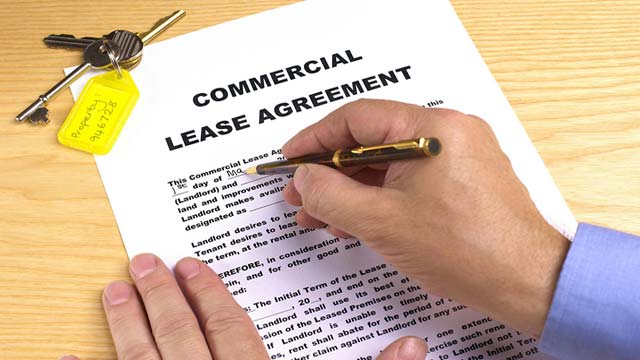
Navigating Lease Disputes: Resolving Conflicts Amicably
Lease disputes can arise for various reasons, putting a strain on the landlord-tenant relationship. However, handling these conflicts in a constructive and amicable manner is crucial for a positive living arrangement. In this guide, we’ll explore effective strategies for navigating lease disputes and finding resolutions that benefit both parties.
Understanding Common Lease Disputes
Lease disputes can encompass a range of issues, including disagreements over rent payments, property maintenance, noise disturbances, or lease terms. Identifying the specific nature of the dispute is the first step toward resolution. Tenants and landlords should thoroughly review the lease agreement to clarify any ambiguous terms or obligations.
Open Communication as the Foundation
Effective communication is the cornerstone of resolving lease disputes. Both tenants and landlords should express their concerns and perspectives openly. Initiating a conversation can often uncover underlying issues and pave the way for finding common ground. Tenants should contact their landlords promptly when issues arise, and landlords should be receptive to tenant concerns.
Lease Disputes Link: Lease disputes
Consulting the Lease Agreement
Referencing the lease agreement is essential during lease disputes. Both parties should review the document to clarify rights, responsibilities, and any stipulations related to the specific issue in question. Having a clear understanding of the contractual terms helps to navigate discussions more effectively and minimizes misunderstandings.
Seeking Mediation Services
In cases where direct communication doesn’t lead to resolution, seeking mediation services can be beneficial. Mediators are neutral third parties who facilitate discussions between tenants and landlords to find mutually agreeable solutions. This collaborative approach often results in a more satisfactory resolution without resorting to legal action.
Documenting Issues and Communications
Keeping a record of lease disputes, including written communications, photographs, and any relevant evidence, is crucial. This documentation can serve as evidence in case the dispute escalates, and legal action becomes necessary. Both tenants and landlords should maintain a comprehensive record of the dispute resolution process.
Legal Advice and Tenant Rights
Tenants facing unresolved disputes may seek legal advice to understand their rights and options. Legal professionals specializing in landlord-tenant law can provide guidance on the best course of action. Knowing their rights empowers tenants to make informed decisions and ensures that landlords adhere to legal obligations.
Landlord’s Duty to Provide Habitability
Landlords have a legal obligation to provide habitable living conditions. If a dispute involves issues affecting habitability, such as significant repairs or maintenance problems, tenants should familiarize themselves with local laws governing landlord responsibilities. In some cases, tenants may be entitled to withhold rent until necessary repairs are made.
Tenant’s Duty to Pay Rent
On the other hand, tenants are generally obligated to pay rent in a timely manner as specified in the lease agreement. If a dispute arises over rent payments, tenants should communicate any financial difficulties promptly and, if necessary, negotiate a temporary solution with the landlord. Open dialogue can often prevent the escalation of disputes.
Considering Alternative Dispute Resolution Methods
Apart from mediation, other alternative dispute resolution methods, such as
Securing Your Rental Property: Effective Safety Measures

Securing Your Rental Property: Effective Safety Measures
Ensuring the security of your rental property is not only a priority for landlords but also crucial for tenant satisfaction and overall property value. In this article, we’ll explore various effective safety measures that landlords can implement to enhance the security of their rental properties.
1. Robust Access Control Systems
Implementing robust access control systems is a fundamental step in securing rental properties. Consider installing keyless entry systems, security codes, or smart locks. These technologies not only enhance security but also provide convenience for tenants, offering them a modern and efficient way to access their homes.
2. Adequate Outdoor Lighting
Well-lit exteriors act as a deterrent to potential criminals. Ensure that the exterior of your rental property, including entryways, pathways, and parking areas, is adequately illuminated. Motion sensor lights can be particularly effective in providing additional security by activating in response to movement.
3. Surveillance Cameras for Deterrence
The presence of surveillance cameras can significantly deter criminal activity. Install visible cameras at strategic locations around the property. Modern systems often allow for remote monitoring, providing landlords with an added layer of security and the ability to keep an eye on the property even from a distance.
4. Regular Maintenance of Landscaping
Maintaining a well-kept landscape is not only aesthetically pleasing but also contributes to security. Trim bushes and trees near windows and entry points to eliminate potential hiding spots for intruders. A neat landscape enhances visibility and reduces the risk of unauthorized access.
5. Secure Windows and Doors
Strengthening windows and doors is a critical aspect of rental property security. Consider installing reinforced doors, deadbolt locks, and window security film. These measures make it more challenging for intruders to gain unauthorized access and provide an additional layer of protection for tenants.
6. Neighborhood Watch Collaboration
Engaging with neighborhood watch programs fosters a sense of community security. Collaborate with local neighborhood watch groups to enhance surveillance and communication. A vigilant community can quickly respond to and report any suspicious activities, further fortifying the security of the rental property.
7. Alarm Systems for Immediate Response
Install reliable alarm systems that can alert authorities in case of a security breach. These systems serve as a quick response mechanism, providing timely intervention and minimizing potential damage. Additionally, visible alarm system signage can act as a deterrent to potential intruders.
8. Adequate Signage for Security Policies
Clearly communicate security policies to tenants through signage. This includes guidelines on locking doors and windows, reporting suspicious activities, and other safety measures. Tenant awareness is a crucial component of overall security, and informative signage reinforces these protocols.
9. Emergency Preparedness Planning
Developing emergency preparedness plans enhances the overall security of the rental property. Ensure that tenants are aware of evacuation routes, emergency contacts, and procedures for reporting security concerns. Being well-prepared for unforeseen events contributes to a safer living environment.
10. Professional Security Assessments
Engaging professional security assessments can provide landlords with valuable insights into potential vulnerabilities. Security experts can evaluate
Tenant’s Entitlements: Understanding Renter’s Rights

Tenant’s Entitlements: Understanding Renter’s Rights
Renters have rights that protect them in various aspects of the landlord-tenant relationship. Understanding these rights is crucial for tenants to ensure a fair and lawful living arrangement. In this article, we explore the key aspects of renter’s rights, providing insights into the legal protections tenants can expect.
Right to Habitable Living Conditions: Ensuring a Safe Home
One fundamental right tenants possess is the right to habitable living conditions. Landlords are obligated to maintain a property that is safe, sanitary, and fit for human habitation. This includes ensuring the property meets building and housing codes, addressing any health hazards promptly, and providing essential utilities.
Right to Privacy: Balancing Landlord Access
Tenants have the right to privacy within their rented property. While landlords may need access for maintenance or inspections, they must adhere to the law and respect the tenant’s privacy. Understanding the terms outlined in the lease agreement, especially the entry and access clause, helps strike a balance between privacy and necessary landlord access.
Right to Repairs and Maintenance: Timely Property Upkeep
Tenants have the right to request repairs and maintenance for issues that affect habitability. Landlords are generally responsible for ensuring the property remains in good condition. This includes addressing structural issues, plumbing and electrical problems, and other essential repairs promptly. Tenants should report issues promptly to ensure timely resolution.
Right to Fair Housing: Protection Against Discrimination
The right to fair housing ensures that tenants are protected against discrimination based on race, color, religion, sex, national origin, disability, or familial status. Landlords cannot deny housing, set different terms, or provide different services based on these protected characteristics. Understanding fair housing laws empowers tenants to recognize and address any discriminatory practices.
Right to Security Deposit Return: Transparent Refunds
Upon the termination of the lease, tenants have the right to the return of their security deposit, minus any allowable deductions. Landlords should provide an itemized list of deductions, typically for unpaid rent or damages beyond normal wear and tear. Understanding the security deposit clause in the lease agreement is essential for tenants to know their rights in this regard.
Right to Non-Retaliation: Freedom from Retribution
Tenants have the right to live without fear of retaliation from landlords. This means landlords cannot retaliate against tenants who exercise their legal rights, such as reporting code violations or requesting repairs. Understanding the protections against retaliation ensures tenants feel secure in asserting their rights without fear of negative consequences.
Right to Lease Renewal: Ensuring Fair Treatment
In many jurisdictions, tenants have the right to lease renewal under certain conditions. Landlords cannot arbitrarily refuse to renew a lease without valid reasons, and tenants have the right to know the criteria for lease renewal. Understanding lease renewal rights provides tenants with clarity and helps ensure fair treatment.
Right to Notice for Eviction: Legal Procedures
Tenants have the right to receive proper notice before eviction. The eviction process must follow legal procedures, including providing written notice and allowing tenants the opportunity to address

